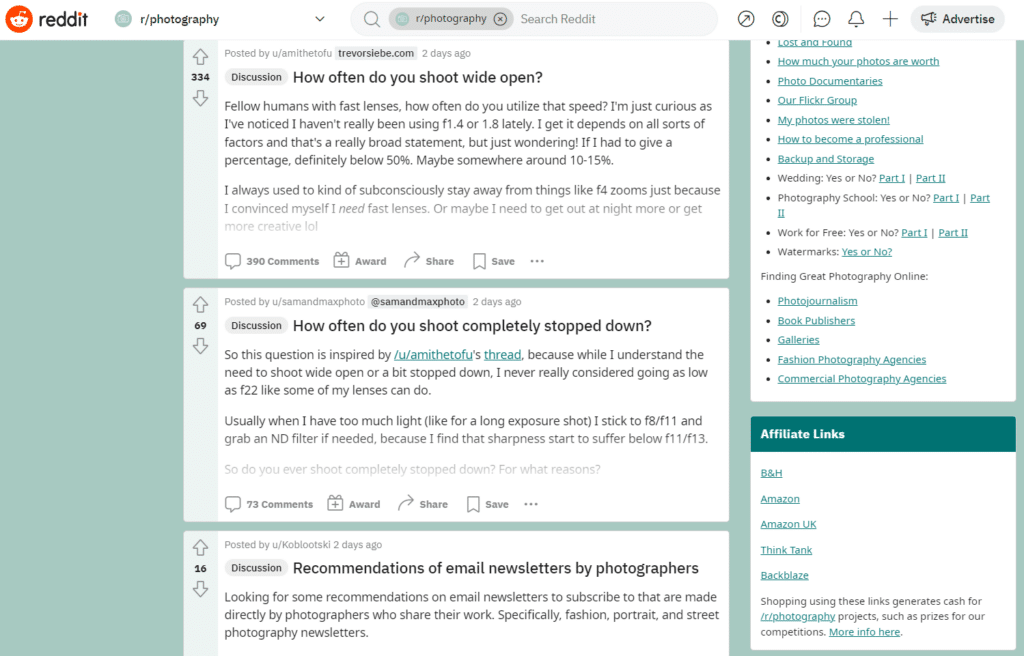There are a lot of different ways that writing is used online.
Two of the most common buckets that this writing falls into are “copywriting” and “content writing”, and distinguishing between the two can be a bit tricky, primarily because they are so similar.
If you just need a quickie definition, we have you covered in the section below.
If the nuances between these two types of writing are important for the purpose of making money, whether you are the one doing the writing or using the writing, then continue past the initial section for an in-depth look at copywriting vs content writing.
Copywriting vs Content Writing In 30 Seconds
Copywriting is writing intended to prompt the reader to take a specific, usually immediate action (like a sale, email signup, or call), while content writing focuses on informing, educating, or entertaining the reader.
Copywriting and content writing are used in different ways.
Copywriting deliverables include:
- Copywriting Deliverables
- Sales pages
- Landing pages
- Email campaigns
- Product descriptions
- Advertisement copy
- Website copy
- Direct mail pieces
- Billboards
- Video sales letters (VSLs)
- Webinar scripts
Content writing deliverables include:
- Articles
- Whitepapers
- Ebooks
- Case studies
- Press releases
- Email newsletters
- Social media posts
- User guides and manuals
- Industry reports
- Research summaries
For a more in-depth look at the differences in writing copy vs content and how to use each for your business, continue reading.
First, let’s define copywriting.

Copywriting is the process of writing words intended to prompt a specific action by the reader. It’s always connected to the act of promoting or selling a business, organization, brand, product, or service, which makes it, by definition, a form of marketing.
The primary goal of copywriting is to persuade or sell. It aims to capture the attention of potential customers, address their needs and pain points, and ultimately convince them that the product or service being offered is the best solution to solve their existing needs or desires.
Here’s a few examples of copywriting that you might encounter in day-to-day life:

While scrolling through social media, you might come across a sponsored post from a new skincare brand promoting a limited-time discount on their best-selling products. The catchy headline and persuasive language used in the ad pique your interest, and you click the “Shop Now” button to learn more about the products and take advantage of the offer.

While checking your email, you might get an email newsletter from one of your favorite brands, announcing a flash sale with an exclusive coupon code. The subject line “Unlock your 25% discount – today only!” grabs your attention, and the compelling copy inside the email convinces you that this is an opportunity you shouldn’t miss. As a result, you proceed to browse the store’s website and make a purchase using the coupon code.
In most cases, when you encounter copywriting in real life, its goal is to grab your attention, show you how a product or service will solve your problems, and then motivate you to make an immediate purchase.
Content writing, on the other hand, is quite a bit different.
Next, let’s define content writing.

Content writing is the process of creating written materials, such as blog posts, articles, whitepapers, and guides, that are primarily intended to inform, educate, or entertain the reader.
Unlike copywriting, content writing does not directly focus on selling or persuading; instead, the primary goal is to deliver a favorable experience to the reader that makes them view the brand favorable and want to come back for more content from the brand.
Ideally, we want content writing to motivate people to provide additional contact info that we can use to continue engaging them to the brand (usually their email address).
Here’s a few examples of content writing that you might encounter in day-to-day life:

Maria is searching for healthy meal ideas for her family on Google. She types in “healthy family meal ideas” and finds a blog post titled “10 Nutritious and Easy-to-Prepare Recipes for Your Family” on the first page of the search results. The informative article provides valuable insights, helpful cooking tips, and step-by-step instructions, which Maria appreciates and decides to bookmark for future reference.

Tom is browsing through his favorite photography forum, looking for advice on improving his landscape photography skills. One of the forum members shares a link to an article titled “Top Techniques for Capturing Stunning Landscape Images.” Tom clicks on the link and discovers a wealth of information and inspiring stories from professional photographers, leaving him feeling motivated to practice and refine his craft.
In most cases, when you encounter content writing, its goal is to hold and reward your attention rather than prompt a specific action. Getting you to act by signing up for an email list, subscribing, or bookmarking is a secondary goal, one which won’t happen unless that primary goal is fulfilled.
The Key Differences Between Copywriting & Content Writing
Now that we have a basic understanding of each type of copy, let’s talk about the key differences between the two.
1. Copy and content have different purposes.
The main goal of copywriting is to prompt an immediate reaction or action from the reader, such as buying a product, subscribing to a newsletter, or seeking additional information. In contrast, content writing seeks to inform, educate, or entertain readers by offering valuable insights that foster trust and establish credibility over time.
2. Copy and content take a different approach.
Copywriting employs persuasive language, emotional appeals, and various psychological tactics like urgency, scarcity, and social proof to motivate readers to act immediately. Content writing concentrates on providing informative, engaging, and valuable material, frequently using storytelling and a conversational style to resonate with readers.
3. Copy and content tend to target different stages of the buying journey.
Copywriting often targets customers who are closer to making a purchase, typically focusing on the consideration and decision stages, where persuasive language and emotional appeals can have the most impact. Content writing often engages customers at the awareness and interest stages, allowing the brand to “get in early” and build a strong, long-term relationship with customers.
4. Copy and content are structured differently.
Copywriting is often succinct and organized to emphasize crucial information, advantages, and calls-to-action as efficiently as possible. Every single line is important in terms of what it says and where it goes. Content writing is a lot more flexible in terms of structure and can be adjusted to suit the experience being created for the reader. Additional sections can be added or removed without having a significant impact on the outcome.
5. Copy and content have different types of CTAs.
A prominent and unambiguous call-to-action (CTA) is a mandatory part of any piece of copywriting, as driving that action is the primary goal of the copy. In content writing, on the other hand, CTAs aren’t required and tend to be subtler and more focused on encouraging further interaction, like reading related content, commenting, or sharing. The most aggressive content CTAs are usually simple requests for an email address in exchange for additional content.
6. Copy and content measure success differently.
Measuring copywriting is pretty straightforward and can be evaluated using metrics like conversion rates, click-through rates, and return on investment (ROI). Most people would tell you that success in content writing is a lot more vague and involves stuff like: reader engagement, social sharing, time spent on the page, and its contribution to long-term brand reputation and search engine rankings.
Most people are wrong.
How Do Copy And Content Drive Profit To A Business?
This is the part where most people get it wrong: understanding how these two types of writing drive profit.
Most people understand copywriting.
People read the ad and buy the product… or some variation of that.
See, read, buy.
Pretty straightforward.
Content writing is quite a bit more complex, but that’s often used as an excuse to not even attempt to understand or demonstrate how profit is being created through the content.
Many writers and marketing agencies can’t actually make content profitable… even while being paid on a daily basis to do so.
Content writing drives profit in a number of different ways:
- The primary method is that content consumers are intentionally turned into leads, who are then turned into buyers via a combination of email marketing, sales copy, and in many cases, actual sales staff.
- Content consumers are also attracted back to the brand via remarketing ads that plug them directly into sales funnels.
- Some content consumers will organically return to a particular content channel or engage with the brand across multiple channels until they are ready to make a purchase.
- Some content consumers will share your content with others, exposing new people to your brand who will eventually make a purchase.
Most people focus primarily on #3 and #4 and think that is what makes “content marketing” work, but it only accounts for around 5% or less of content-driven sales.
75% of your sales will come from #1, and the other 20% will come from #2.
Without a converting funnel in place that includes:
- Strategic content writing
- Strategic lead acquisition
- A successful nurturing process
- A high-converting offer
… content marketing is essentially lighting cash on fire.

If you want to create content that does NOT light you or your client’s cash on fire, scroll down one section and enter your email. I’ll show you how to create content that drives actual profit.
Copywriter vs Content Writer Salaries
If you are wondering whether there is a notable difference in pay between copywriting and content writing, there is, but it’s fairly small.
According to the major salary aggregators, the average copywriter makes:
- Glassdoor: $58,000
- Payscale: $51,000
- Indeed: $57,000
- Salary.com: $60,000
These same sites show content writers earning just a bit less.
- Glassdoor: $51,000
- Payscale: $51,000
- Indeed: $54,000
- Salary.com: $49,000
In my experience writing both content and copy over the last decade+ and training quite a few writers in both disciplines along the way, that tracks.
Content writing tends to pay less but provides more consistent work. Once you close a client, you can have that client for months or even years.
That said, the emergence of writing-focused AI has really turned the content writing market on its head, and businesses are scrambling to figure out how to incorporate AI into their workflow.
While it’s still too early to predict how AI will impact content marketing and search engine optimization, both copywriters and content writers should be investing time and effort into learning how to incorporate AI into their writing process to write better content in a fraction of the time.
If you’d like to learn how to create profitable copy and content (using AI to superpower your abilities), enter your email below.





